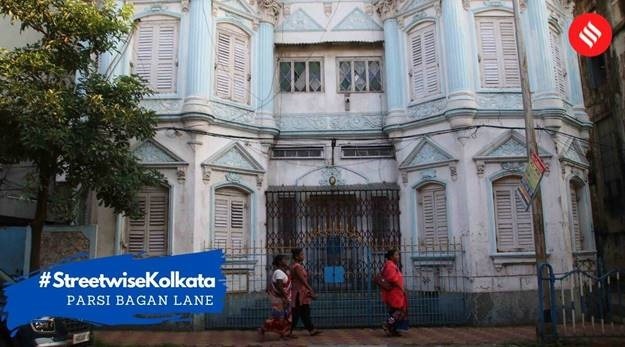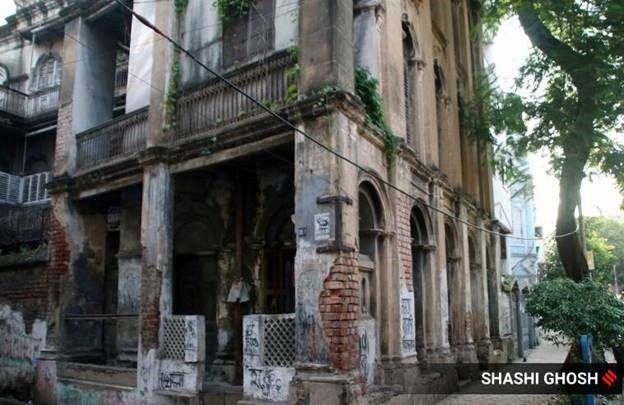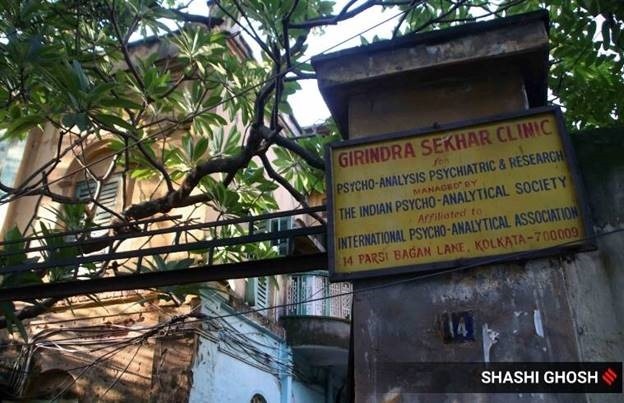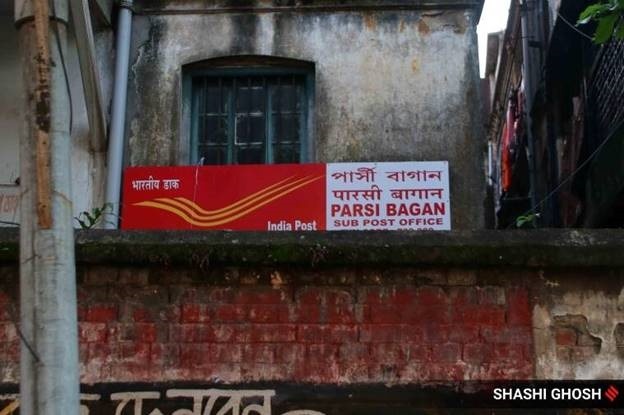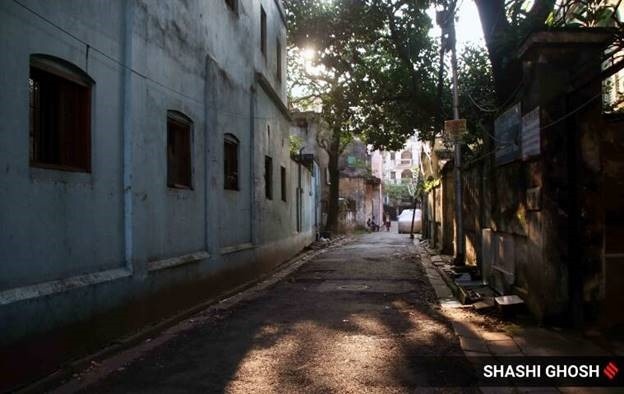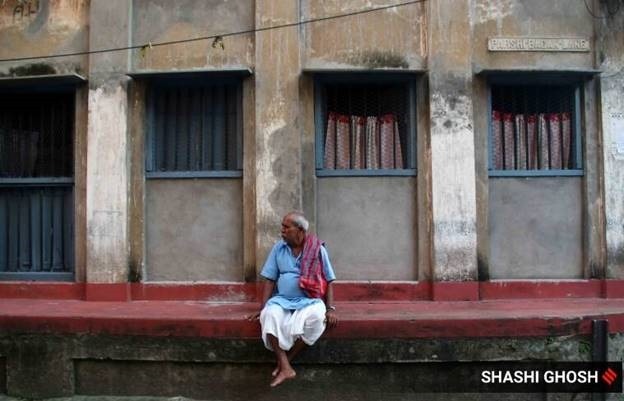What is less well known is the lane’s association with the development of psychoanalysis in the subcontinent.
Article by Neha Banka | Indian Express
Parsi Bagan Lane in Kolkata. (Express Photo by Shashi Ghosh)
Not very far from the Sealdah railway station in Kolkata and just a short walk from the 108-year-old Raja Bazar Science College is a narrow lane at the city’s centre. The entire length of Parsi Bagan Lane can be covered in five minutes on foot, but it is one that is steeped in history.
While it is not clear where the “Bagan” came from, the lane’s connection to the city’s Parsi community is evident. But what is less well known is its association with the research and development of psychoanalysis as a subject in the Indian subcontinent.
At 14, Parsi Bagan Lane stands the 100-year-old Indian Psychoanalytical Society, inside a building constructed in the tropical colonial style. (Express Photo)
At 14, Parsi Bagan Lane stands the 100-year-old Indian Psychoanalytical Society, inside a building constructed in the tropical colonial style. The institute was founded by Dr Girindrasekhar Bose in January 1922, a year after Dr Bose was awarded the D Sc degree of Calcutta University for his thesis “The Concept of Repression”, a copy of which Bose had sent to Sigmund Freud.
In his book Freud’s India, author Alf Hiltebeitel examines the work and relationship of Bose and Freud, touching up on Bose’s research and his establishment of the society in Parsi Bagan Lane. Bose, writes Hiltebeitel, was the first physician in the subcontinent to start using psychoanalysis to mental-health patients.
In 1940, Bose founded the Lumbini Park Mental Hospital in the city, and a clinic at 14, Parsi Bagan Lane to treat outdoor patients. This clinic later went on to become the Indian Psychoanalytical Society’s address, but continues to operate in one section of the building.
The neighbourhood of Parsi Bagan played an important role in the freedom movement. (Express Photo)
For now, most buildings in the narrow lane appear to have escaped the destruction of the city’s unique architectural heritage. This lane is also one of the handful of locations in Kolkata where one can still see and sit on the red-oxide rowak, an elevated platform seen outside old houses. A classic architectural feature that created the concept of adda, these are visible only in small residential neighbourhoods now.
A few metres from the foot of this lane is a unique address important to the pre-Independence history of Calcutta. Just next door to the Brahmo Balika Shikshalaya (Brahmo Girls School) at 295/A, Acharya Prafulla Chandra Road is the Sadhana Sarkar Uddyan, also known as the Parsi Bagan Square.
Parsi bagan Post office. (Express Photo)
This park was also formerly known as Greer Park, after Richard Greer, who was Calcutta corporation chairman in 1901. However, it is not clear when the park’s name was changed to Parsi Bagan Square.
At this address, the Calcutta flag, the first unofficial flag of the subcontinent, was hoisted on 7 August, 1906, in protest against the partition of Bengal. The Calcutta flag, jointly designed by nationalists Sachindra Prasad Bose and Hemchandra Das Kanungo, who was also a member of the revolutionary group Anushilan Samiti.
The Calcutta flag. (Photo: wikipedia.org)
The flag had three horizontal bands in orange, yellow and green, with eight half-opened lotuses on the orange stripe on top representing British India’s eight provinces. The green strip at the bottom had the symbols of sun and an Islamic-style crescent moon in white. This became the precursor to the Indian national flag.
While it is not clear where the “Bagan” came from, the lane’s connection to the city’s Parsi community is evident. (Express Photo)
The neighbourhood of Parsi Bagan played an important role in the freedom movement. A stone’s throw from this park, where the flag was first hoisted, stands the The Federation Hall Society, which represented undivided Bengal. It was established to provide a space for people from the severed provinces to meet and protest the partition of Bengal.
The neighbourhood of Parsi Bagan played an important role in the freedom movement. (Express Photo)
The location of the Federation Hall Society in this neighbourhood indicates that it was a frequent meeting place for nationalists and revolutionaries, which was why the Calcutta flag was first hoisted in a park here.
One of the older neighbourhoods in the area, the narrow lane is surrounded by several buildings of historical and cultural significance—Satyajit Ray’s ancestral home, for instance. Kolkata’s history is embedded in almost every one of its streets and bylanes. Although the most imposing and recognisable roads and squares often get more attention, it is these smaller bylanes, easy to miss if one is not paying attention, that tell some of the city’s most remarkable stories.

